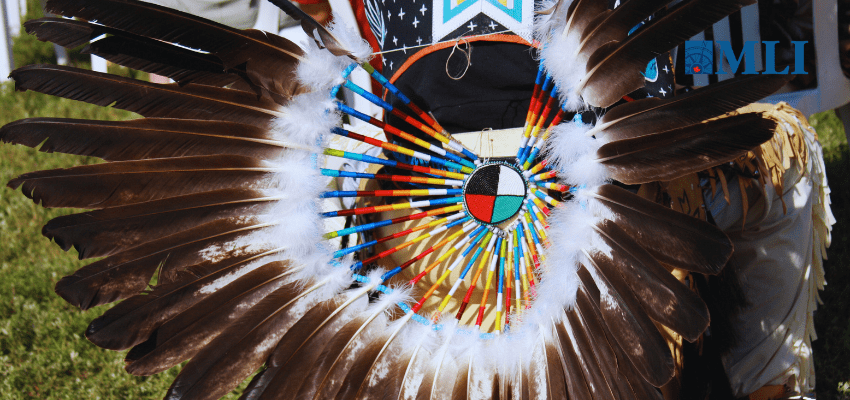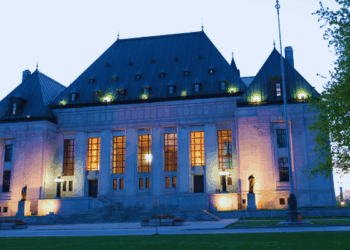This article originally appeared in the Hub.
By Karen Restoule, September 3, 2024
A majority of Canadians think that Canada is broken after years of stagnant incomes, affordability challenges, rising crime, government failures on basic functions like healthcare and immigration, and a deepening cultural malaise. But decline is a choice, and better public policies are needed to overcome Canada’s many challenges. Kickstart Canada brings together leading voices in academia, think tanks, and business to lay out an optimistic vision for Canada’s future, providing the policy ideas that governments need to ensure a bright future for all Canadians.
In 2015, Liberal Leader Justin Trudeau campaigned on a platform that emphasized a renewed “nation-to-nation” relationship with Indigenous Peoples based on mutual respect, recognition of rights, and cooperative partnership.
He said that his government would work to end the “paternalistic, colonial” approaches that had historically characterized Canada’s relationship with Indigenous Peoples. This language was meant to signify a new era in Canadian governance with Indigenous Peoples, focusing on reconciliation and empowerment rather than control and assimilation.
Fast forward to today. After winning the election nearly a decade ago, Trudeau has failed to follow through on his promises to Indigenous Peoples, eroding trust, slowing reconciliation, and perpetuating social and economic disparities. This has led to criticism of his Liberal government’s seriousness in improving the lives of Indigenous Peoples—did they mean what they said? Or was this merely performative allyship? The persistence of key problems like access to clean drinking water has undermined confidence in subsequent commitments.
First off, a real commitment to Indigenous reconciliation would involve recognizing Indigenous sovereignty through legislative reform, addressing critical infrastructure like clean water, health care, reliable energy, roads, fire protection, access to telecommunication and connectivity with sustained investment, and ensuring nation-to-nation dialogue with Indigenous Peoples. This would require concrete actions, accountability, and, most importantly, actual results.
But First Nations can’t achieve this without government action.
The biggest impediment that First Nations face in achieving these goals is the lack of control over their own governance due to the prolonged effects of paternalism. This includes restrictive federal policies, underfunding, and a dependence on government systems that often limit self-determination.
Overcoming these challenges requires rebuilding nationhood, securing legal and financial sovereignty, and addressing the deep-rooted economic disparities that hinder progress.
Unlike immigrant communities who often build wealth within one or two generations after moving to Canada, these governance failures prevent First Nations from accumulating and transferring wealth across generations, perpetuating cycles of poverty.
Merely amending a section or two of the Indian Act every 20 years or so, as both Liberal and Conservative governments have done since its inception in 1876, doesn’t respond to the magnitude and urgency of the issues before us—and, most importantly, it doesn’t set First Nations (and the country) on a more prosperous path.
“Kickstarting” a new nation-to-nation relationship and shifting the course of the past 150-plus years under the Indian Act requires bold vision and action through several governance-focused mechanisms, many of which have already been successfully implemented across the country.
Modern treaties
Modern treaties establish a framework for self-governance, land ownership, and resource management. These treaties are negotiated to reflect current realities while recognizing Indigenous sovereignty and jurisdiction. It’s been done before. The James Bay and Northern Quebec Agreement (1974) and the Nunavut Land Claims Agreement (1993) have successfully shifted governance authority from the federal government to Indigenous Nations, opening the avenue to exercise self-determination.
Self-government agreements
First Nations negotiate self-government agreements with federal and provincial governments, establishing the legal authority for First Nations to govern their own affairs. These agreements often cover areas such as education, health care, resource management, and justice, among others. Again, it’s been done before: the Nisga’a Final Agreement (2000) and the Yukon First Nations Self-Government Agreements (1993). These agreements allow First Nations to develop and enforce their own laws and manage their own resources, independent of the Indian Act.
Regional governance models
First Nations form tribal councils or regional governance bodies that represent multiple communities and provide centralized governance services, such as health, education, and economic development. These bodies work in partnership with federal and provincial governments but operate autonomously. Once again, it’s been done before. Many First Nations have established tribal councils or regional bodies, such as the Grand Council of the Crees (Eeyou Istchee) in Quebec, which governs Cree communities in the James Bay region. These councils function independently of the Indian Act and focus on collective governance.
Indigenous-led customary governments
First Nations revitalize governance systems based on their long-standing legal principles, laws, governance, and leadership structures. These governments assert sovereignty and self-determination by implementing their own constitutions and governance frameworks. A more recent example, the Tŝilhqot’in Nation has asserted sovereignty through court rulings (like the landmark Tŝilhqot’in decision in 2014) and has moved to govern based on its customary laws, bypassing the Indian Act entirely.
Nation-to-Nation agreements
Bilateral agreements are established between First Nations and the federal government, recognizing First Nations as sovereign entities and engaging in equal partnership. These agreements outline jurisdictional powers, governance frameworks, and resource management strategies. In another recent example, the concept is still emerging, the Anishinabek Nation Governance Agreement (2022) gives 23 First Nations in Ontario increased autonomy over governance, including citizenship, elections, and government operations, outside of the Indian Act.
Reconciliation agreements
The first of its kind, the Haida Nation and the British Columbia Treaty Commission are opting for a different approach than the traditional treaty-making process. Rather than signing on to a modern treaty, which they argue could diminish their sovereignty, the Haida Nation is pursuing reconciliation agreements with provincial and federal governments that focus on co-management of lands and resources while recognizing the Haida Nation’s inherent rights and governance over the unceded territory. The Haida Nation has indicated this approach ensures it maintains sovereignty without the limitations and certainty of a traditional treaty.
Renegotiating treaties
Renegotiating a treaty for modern application would include updating clauses of a historic treaty to address issues like governance, land rights, resource management, and points involving day-to-day life like education and health while maintaining the original spirit of the agreement. This process would adapt the treaty to modern legal, governance, and economic contexts without replacing it entirely or rewriting it. Treaty 8, originally signed in 1899, has not been formally renegotiated as a whole treaty, but specific aspects of it have been addressed through modern agreements and legal settlements. In this case, it was undertaken in response to resource development in B.C., such as hydroelectric dams, mining, and oil and gas exploration.
And while this has yet to be undertaken within the context of whole treaty renewal, the 21 Nations within the Robinson-Huron Treaty would be best positioned to lead here in light of their tremendous leadership in affirming a key economic clause within their 1850 treaty.
Embracing economic freedom
Despite the setbacks and false starts, Indigenous Peoples are not deterred by a lagging government. Far from it. There are, after all, other partners to turn to. There is a renewed energy among many First Nations, buoyed by the growing willingness of industry to forge business partnerships with them, leading to a resurgence of growth and prosperity in their communities—levels of success not seen in decades.
While many governance solutions have been tried, and some yet to be tried pending a bolder and more visionary government, there is one alternative approach, albeit a temporary one, to shifting the governance framework: an economic-focused one.
This one has First Nations focus on building a robust local economy that is fully self-sustaining, reducing dependence on federal government support and rendering the Indian Act almost irrelevant. By achieving economic independence through resource management, entrepreneurship, and community-driven development, a First Nation can assert greater autonomy and sovereignty in practice.
The Fort McKay First Nation is a prime example of a self-sustaining local economy largely independent of federal government control. In the heart of Alberta’s oilsands, Fort McKay has leveraged its location to create profitable partnerships with major energy companies, developing a thriving economy centred on the oil and gas industry. This economic success has allowed Fort McKay to assert greater autonomy over its affairs and reduce reliance on federal funding and the Indian Act.
Acknowledging that, geographically, few First Nations can benefit from the oil and gas industry, there are other leading examples such as the Osoyoos Indian Band in B.C., which has leveraged the opportunities from its territory and developed successful business ventures in vineyards, tourism, and construction, creating significant economic independence from federal oversight. The Membertou First Nation in Nova Scotia thrives through diversification in fisheries, gaming, hospitality, and technology sectors.
The proposal here reflects a Canadian Conservative legacy. Brian Mulroney, prime minister from 1984 to 1993, had a significant impact on First Nations governance through his engagement with Indigenous communities and issues during his tenure. His government played a key role in advancing the recognition of Indigenous self-governance, most notably through the inclusion of Indigenous leaders in the 1992 Charlottetown Accord, which acknowledged Indigenous Peoples’ inherent right to self-government, but which was (unfortunately) rejected in a referendum.
Mulroney also championed modern treaty negotiations, leading to agreements like the 1993 Nunavut Land Claims Agreement, which paved the way for the creation of the self-governing territory of Nunavut. Additionally, his establishment of the Royal Commission on Aboriginal Peoples in 1991 highlighted the need for a renewed nation-to-nation relationship, focusing on Indigenous sovereignty and self-determination.
The oil and gas industry in particular can be credited for keeping business moving by forming meaningful partnerships with First Nations over the past 15 to 20 years, recognizing that those who are most impacted by development projects should be the first to benefit.
But even here, significant challenges remain. Financial barriers, deeply rooted in the Indian Act, are currently preventing First Nations from accessing competitive borrowing options for resource development, limiting opportunities for growth.
And sure, while loan guarantee programs like the Alberta Indigenous Opportunities Corporation are being implemented provincially and now federally thanks to the exhaustive advocacy work of the First Nations Major Projects Coalition, and these serve as a reliable workaround solution to the choke-hold of the Indian Act, the fundamental problem remains.
It’s clear that what served the government’s objectives back in 1876 no longer serves us today—neither First Nations, the Crown, nor industry.
At last count, there were 25 finalized and active self-government agreements across Canada involving 43 of the 634 First Nations, with roughly 50 self-government agreements being actively currently negotiated. These numbers reveal that more than 90 percent of First Nations remain strapped by the Indian Act, the majority of which sit within the territories of “historic” treaties. While these treaties remain legally active today, they are administered (quite poorly) through federal departments—so poorly that the Crown is increasingly held to account by courts at all levels, as seen earlier this summer when the Supreme Court of Canada issued a legal judgement against the Crown for failing to uphold its obligations as set out in the Robinson Treaties.
It is an understatement to say that Canada must address the outdated policies it created in 1876’s Indian Act with a great deal of urgency. The time is now to end paternalism and move beyond this core governance issue—in any form that restores First Nations autonomy. First Nations and Canadian prosperity is counting on it.
Karen Restoule is vice president at Crestview Strategy and a senior fellow at the Macdonald-Laurier Institute. She is Ojibwe from Dokis First Nation.






